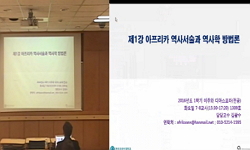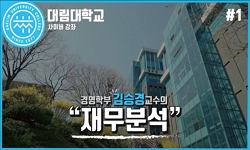본고는 2000년대 해외여행서사에 나타난 유동적 근대의 양상을 지도적 국경의약화와 내면적 국경의 강화라는 징후로 분석하고, 이에 대응하는 탈주/월경의 문학적 상상 양상을 살펴본다. 2000...
http://chineseinput.net/에서 pinyin(병음)방식으로 중국어를 변환할 수 있습니다.
변환된 중국어를 복사하여 사용하시면 됩니다.
- 中文 을 입력하시려면 zhongwen을 입력하시고 space를누르시면됩니다.
- 北京 을 입력하시려면 beijing을 입력하시고 space를 누르시면 됩니다.

외부 없는 세계의 여행 서사 -2000년대 해외여행서사에 나타나는 억압과 탈주 = Travel narrative of the world without outside -Oppression and Escape in the 2000 International Travel Narrative
한글로보기부가정보
국문 초록 (Abstract)
이러한 특성들을 통해 읽어낼 수 있는 것은 유동하는 근대의 증후군이었으며, 이러한 현대가 주체를 내적인 본향의 자리가 결여된 존재로 구성하고 있다는 사실이다. 한편으로 이러한 특성들은 지도적 국경의 약화와 이에 반하는 내재적 경계의 강화를 드러내는데, 이 내재적 경계는 슬럼이나 게토라는 공간적 측면과 혐오와 공포의 정서라는 심리적 측면이 함께 한다. 여행자들은 떠나지만 다시 벽 안으로 들어서는데 그것은 ‘방’과 ‘길(미로)’의 모습으로 펼쳐진다. 이 속에서 그들은 철저하게 자신의 내면으로 들어서지만, 그것은 곧 유동적이고 압축적인 지구화된 세계의 경험과 다르지 않다. 밖을 향해 탈주하지만 결국 더 견고하고 거대한 틈 안에갇혀있다는 것은 인식하는 것은 이 서사들에 공통적으로 드러난다.
떠났지만 다시 갇힌 존재로, 그러나 정착할 수 없는 존재로 구성되는 주체는 나름의 방법으로 다시 한 번 탈주를 준비한다. 일부는 잃어버린 자신의 정체성을 새롭게 구성하기 위해 입사의 의식을 완주하여 불안을 넘어서고 기억을 통해 고유성을 획득하고자 한다. 또한 이웃을 향한 애도와 배려를 잊지 않음으로써 갇힘 벽에문을 내거나, 성실하게 이동을 지속하는 신체의 물리적 경험을 지속하며 비효율적이고 서툴지만 끈덕진 ‘통역’, 곧 소통을 위한 인내와 배려를 지속하기도 한다. 다른 한편 소유의 불안정성을 적극적 무소유로 향유하는 유목의 삶의 방식을 지속하기도 한다.
현재 우리가 놓여 있는 곳은 마치 ‘국경의 밤’과 같다. 명확한 선은 보이지 않아도 경쟁과 혐오로 그은 무수한 선들이 어디서든 우리를 억압한다. 소설 속 인물들은 열림 공간 속의 벽과 선에 대한 인식을 통과하여 월경의 상상력으로 나아간다.
아마도 소설은 끊임없는 이 상상력의 역능으로부터 자유로울 수 없을 것이다.
본고는 2000년대 해외여행서사에 나타난 유동적 근대의 양상을 지도적 국경의약화와 내면적 국경의 강화라는 징후로 분석하고, 이에 대응하는 탈주/월경의 문학적 상상 양상을 살펴본다. 2000년대 해외여행서사의 두드러진 특징으로 인식한것은 비장소성과 익명성, 그리고 기존의 여행서사의 여행구조를 벗어난 구조를 형성하고 있다는 것이다. 정착-떠남-장착 플롯을 벗어나 2000년대 여행서사들의 구조는 귀환이 생략되어 있다는 것이다.
이러한 특성들을 통해 읽어낼 수 있는 것은 유동하는 근대의 증후군이었으며, 이러한 현대가 주체를 내적인 본향의 자리가 결여된 존재로 구성하고 있다는 사실이다. 한편으로 이러한 특성들은 지도적 국경의 약화와 이에 반하는 내재적 경계의 강화를 드러내는데, 이 내재적 경계는 슬럼이나 게토라는 공간적 측면과 혐오와 공포의 정서라는 심리적 측면이 함께 한다. 여행자들은 떠나지만 다시 벽 안으로 들어서는데 그것은 ‘방’과 ‘길(미로)’의 모습으로 펼쳐진다. 이 속에서 그들은 철저하게 자신의 내면으로 들어서지만, 그것은 곧 유동적이고 압축적인 지구화된 세계의 경험과 다르지 않다. 밖을 향해 탈주하지만 결국 더 견고하고 거대한 틈 안에갇혀있다는 것은 인식하는 것은 이 서사들에 공통적으로 드러난다.
떠났지만 다시 갇힌 존재로, 그러나 정착할 수 없는 존재로 구성되는 주체는 나름의 방법으로 다시 한 번 탈주를 준비한다. 일부는 잃어버린 자신의 정체성을 새롭게 구성하기 위해 입사의 의식을 완주하여 불안을 넘어서고 기억을 통해 고유성을 획득하고자 한다. 또한 이웃을 향한 애도와 배려를 잊지 않음으로써 갇힘 벽에문을 내거나, 성실하게 이동을 지속하는 신체의 물리적 경험을 지속하며 비효율적이고 서툴지만 끈덕진 ‘통역’, 곧 소통을 위한 인내와 배려를 지속하기도 한다. 다른 한편 소유의 불안정성을 적극적 무소유로 향유하는 유목의 삶의 방식을 지속하기도 한다.
현재 우리가 놓여 있는 곳은 마치 ‘국경의 밤’과 같다. 명확한 선은 보이지 않아도 경쟁과 혐오로 그은 무수한 선들이 어디서든 우리를 억압한다. 소설 속 인물들은 열림 공간 속의 벽과 선에 대한 인식을 통과하여 월경의 상상력으로 나아간다.
아마도 소설은 끊임없는 이 상상력의 역능으로부터 자유로울 수 없을 것이다.
다국어 초록 (Multilingual Abstract)
Recognized as a distinguishing feature of overseas travel narratives in the 2000s is their non-placement and anonymity, and the structure of the travel narrative. Unlike traditional travel narratives, which consist of a circular structure of origin return, which is usually a settlement-leave-mounted (snacks-travel-snacks) plot of travelers, the structure of travel narratives in the 2000s is omitted.
It is the modern syndrome that flows that can be read through these characteristics, and the fact that this modern constitutes the subject as being without the place of inner home. On the one hand, these traits reveal the weakening of leading borders and the strengthening of intrinsic boundaries, which are combined with the spatial aspects of slum or ghetto and the psychological aspects of aversion and fear. Travelers leave but enter the wall again, unfolding in the form of a room and a path. In this they enter themselves thoroughly, but it is no different from the experience of a fluid and compact globalized world. It is common to these narratives to escape outward, but eventually realize that they are trapped in a stronger, larger gap.
The subject, who is departed but trapped again, but cannot settle down, prepares to escape again in his own way. Some want to acquire a unique position by completing the consciousness of entry to reconstruct their lost identity. Others continue the physical experience of the body, which continues to move in good faith, and continue to be inefficient and clumsy but persistent “interpreters,” patience and consideration for communication. It also continues the nomadic way of life, which enjoys the instability of ownership with no active ownership.
The place where we are now is like 'border night'. There is no clear line, but the world, which has drawn a myriad of lines with more hate and disaster, is an open cell. In any case, the perception of the walls and lines leads to the imagination of Crossing the border. The novel cannot be free from the power of this endless imagination.
This paper analyzes the fluid modernity in the overseas travel narrative in the 2000s as a sign of weakening of the leading border and strengthening of the inner border, and examines the literary imagination of the breakout / menstruation correspondin...
This paper analyzes the fluid modernity in the overseas travel narrative in the 2000s as a sign of weakening of the leading border and strengthening of the inner border, and examines the literary imagination of the breakout / menstruation corresponding to it.
Recognized as a distinguishing feature of overseas travel narratives in the 2000s is their non-placement and anonymity, and the structure of the travel narrative. Unlike traditional travel narratives, which consist of a circular structure of origin return, which is usually a settlement-leave-mounted (snacks-travel-snacks) plot of travelers, the structure of travel narratives in the 2000s is omitted.
It is the modern syndrome that flows that can be read through these characteristics, and the fact that this modern constitutes the subject as being without the place of inner home. On the one hand, these traits reveal the weakening of leading borders and the strengthening of intrinsic boundaries, which are combined with the spatial aspects of slum or ghetto and the psychological aspects of aversion and fear. Travelers leave but enter the wall again, unfolding in the form of a room and a path. In this they enter themselves thoroughly, but it is no different from the experience of a fluid and compact globalized world. It is common to these narratives to escape outward, but eventually realize that they are trapped in a stronger, larger gap.
The subject, who is departed but trapped again, but cannot settle down, prepares to escape again in his own way. Some want to acquire a unique position by completing the consciousness of entry to reconstruct their lost identity. Others continue the physical experience of the body, which continues to move in good faith, and continue to be inefficient and clumsy but persistent “interpreters,” patience and consideration for communication. It also continues the nomadic way of life, which enjoys the instability of ownership with no active ownership.
The place where we are now is like 'border night'. There is no clear line, but the world, which has drawn a myriad of lines with more hate and disaster, is an open cell. In any case, the perception of the walls and lines leads to the imagination of Crossing the border. The novel cannot be free from the power of this endless imagination.
참고문헌 (Reference)
1 안남연, "현대 소설 속에 나타난 다문화 현상 연구" 한국현대문예비평학회 (40) : 163-185, 2013
2 이미림, "해이수 소설의 여행·디아스포라·다문화의식 —≪캥거루가 있는 사막≫, ≪젤리피쉬≫를 중심으로" 국어국문학회 (155) : 329-356, 2010
3 임정연, "지도 바깥의 여행, 유동하는 장소성-2000년대 여행서사의 장소 전유 방식-" 국어국문학회 (184) : 217-239, 2018
4 지그문트 바우만, "지구화, 야누스의 두 얼굴" 한길사 2003
5 해이수, "젤리피쉬" 자음과모음 265-320, 2009
6 마크 피셔, "자본주의 리얼리즘" 리시올 2018
7 이미림, "유동하는 시대의 이방인들, 이주자와 여행자 - 조해진의 ≪로기완을 만났다≫를 중심으로" 한국문학회 (65) : 643-670, 2013
8 이미림, "유동하는 시대의 여행과 이주 양상 - 정도상의 연작소설집 『찔레꽃』을 중심으로" 한국언어문학교육학회 32 : 263-286, 2015
9 이미림, "우리시대의 여행소설" 태학사 2006
10 배수아, "올빼미의 없음" 창작과 비평 155-188, 2010
1 안남연, "현대 소설 속에 나타난 다문화 현상 연구" 한국현대문예비평학회 (40) : 163-185, 2013
2 이미림, "해이수 소설의 여행·디아스포라·다문화의식 —≪캥거루가 있는 사막≫, ≪젤리피쉬≫를 중심으로" 국어국문학회 (155) : 329-356, 2010
3 임정연, "지도 바깥의 여행, 유동하는 장소성-2000년대 여행서사의 장소 전유 방식-" 국어국문학회 (184) : 217-239, 2018
4 지그문트 바우만, "지구화, 야누스의 두 얼굴" 한길사 2003
5 해이수, "젤리피쉬" 자음과모음 265-320, 2009
6 마크 피셔, "자본주의 리얼리즘" 리시올 2018
7 이미림, "유동하는 시대의 이방인들, 이주자와 여행자 - 조해진의 ≪로기완을 만났다≫를 중심으로" 한국문학회 (65) : 643-670, 2013
8 이미림, "유동하는 시대의 여행과 이주 양상 - 정도상의 연작소설집 『찔레꽃』을 중심으로" 한국언어문학교육학회 32 : 263-286, 2015
9 이미림, "우리시대의 여행소설" 태학사 2006
10 배수아, "올빼미의 없음" 창작과 비평 155-188, 2010
11 우미영, "연표·지도 밖의 유랑자와 비장소의 시학 - 배수아의 소설을 중심으로" 한국언어문화학회 (49) : 33-60, 2012
12 윤고은, "알로하" 창작과 비평 259-287, 2014
13 권명아, "무한히 정치적인 외로움" 갈무리 2012
14 지그문트 바우만, "모두스 비벤디 : 유동하는 세계의 지옥과 유토피아" 후마니타스 2010
15 정현목, "마르크 오제, 비장소" 커뮤니케이션북스 2016
16 이장욱, "기린이 아닌 모든 것" 문학과지성사 257-286, 2015
17 조명기, "국제여행소설에 나타난 국외 도시 장소 정체성의 상상 방식 - 소설집 '도시와 나'를 예로 들어" 한국언어문학회 (98) : 225-253, 2016
18 김성중, "국경시장" 문학동네 7-36, 2015
19 닝왕, "관광과 근대성" 일신사 2004
20 이미림, "1990년대 여행소설의 탈근대적 사유와 타자성" (1) : 199-224, 2008
21 임정연, "1990년대 여행서사의 문화지형과 젠더 감수성" 국제어문학회 (71) : 163-186, 2016
동일학술지(권/호) 다른 논문
-
변혁 주체로서의 농민과 동반자로서의 지식인 -단편 「항진기」 다시 읽기
- 한국현대소설학회
- 최성윤
- 2019
- KCI등재
-
1930년대 중반 신문 매체의 문학 담론과 김정한의 초기 단편 -<조선일보>와 <동아일보>의 신춘문예와 「사하촌」 당선을 중심으로
- 한국현대소설학회
- 김준현
- 2019
- KCI등재
-
전쟁의 시공간에서 형성된 여성 정체성의 불연속성 -오정희의 「유년의 뜰」, 「중국인 거리」를 중심으로
- 한국현대소설학회
- 문화
- 2019
- KCI등재
-
김훈 소설에서 묘사의 문제 -『내 젊은 날의 숲』을 중심으로
- 한국현대소설학회
- 김주언
- 2019
- KCI등재
분석정보
인용정보 인용지수 설명보기
학술지 이력
| 연월일 | 이력구분 | 이력상세 | 등재구분 |
|---|---|---|---|
| 2026 | 평가예정 | 재인증평가 신청대상 (재인증) | |
| 2020-01-01 | 평가 | 등재학술지 유지 (재인증) |  |
| 2017-01-01 | 평가 | 등재학술지 유지 (계속평가) |  |
| 2013-01-01 | 평가 | 등재학술지 유지 (등재유지) |  |
| 2010-01-01 | 평가 | 등재학술지 유지 (등재유지) |  |
| 2008-01-01 | 평가 | 등재후보 1차 FAIL (등재후보1차) |  |
| 2006-01-01 | 평가 | 등재학술지 유지 (등재유지) |  |
| 2003-01-01 | 평가 | 등재학술지 선정 (등재후보2차) |  |
| 2002-01-01 | 평가 | 등재후보 1차 PASS (등재후보1차) |  |
| 2000-07-01 | 평가 | 등재후보학술지 선정 (신규평가) |  |
학술지 인용정보
| 기준연도 | WOS-KCI 통합IF(2년) | KCIF(2년) | KCIF(3년) |
|---|---|---|---|
| 2016 | 0.6 | 0.6 | 0.6 |
| KCIF(4년) | KCIF(5년) | 중심성지수(3년) | 즉시성지수 |
| 0.6 | 0.63 | 1.017 | 0.15 |




 DBpia
DBpia






